Hadley planners may tweak affordable housing bylaw in effort to get developers to contribute
| Published: 01-20-2023 3:55 PM |
HADLEY — Ever since the Windfield Estates affordable housing opened in 2002, becoming the first apartment complex in a town where zoning prohibits more than one dwelling unit on a lot, preventing similar projects has been an objective for Hadley officials.
To keep at least 10% of its housing stock as subsidized housing inventory based on the state’s chapter 40B law, the town adopted the so-called inclusionary bylaw that requires subdivision developers to either provide housing for low- and moderate-income people, or make cash payments to an affordable housing trust.
But with no affordable units created through this mechanism since being enacted in 2006, the Planning Board is discussing possible tweaks to the bylaw, and trying to determine how best to get developers to contribute to affordable housing.
Planning Board Clerk William Dwyer said at Tuesday’s meeting that despite the work, including amendments allowing for cash payments by developers, no units have yet been realized.
“For all that we’ve gotten to the point of talking about one affordable unit in the eight or nine years since we adopted it,” Dwyer said.
“We were very noble in our effort, but it’s not working comfortably,” said board member Joseph Zgrodnik.
A recently completed Hadley Housing Production Plan shows that 11.9% of the town’s housing stock, or 275 units, are part of the state’s subsidized housing inventory, while more could come from the planned conversion of the EconoLodge hotel on Route 9, recently purchased by Valley Community Development for a single-room occupancy units project.
The board’s discussion comes as it must make a determination about the Colony Estates subdivision, an eight-lot project off Shattuck Road, and what payment should be made.
Article continues after...
Yesterday's Most Read Articles
 A Waterfront revival: Two years after buying closed tavern, Holyoke couple set to open new event venue
A Waterfront revival: Two years after buying closed tavern, Holyoke couple set to open new event venue
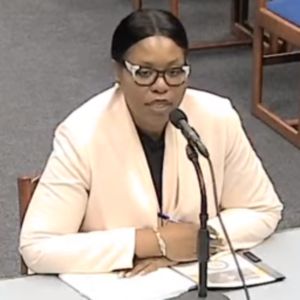 Island superintendent picked to lead Amherst-Pelham region schools
Island superintendent picked to lead Amherst-Pelham region schools
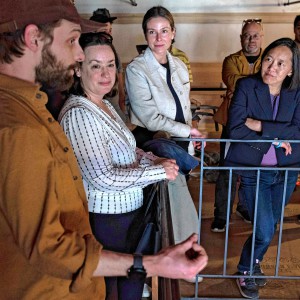 Music key to Northampton’s downtown revival: State’s top economic development leader tours city
Music key to Northampton’s downtown revival: State’s top economic development leader tours city
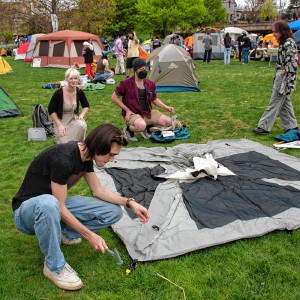 Pro-Palestinian encampment disperses at UMass, but protests continue
Pro-Palestinian encampment disperses at UMass, but protests continue
 Area property deed transfers, May 2
Area property deed transfers, May 2
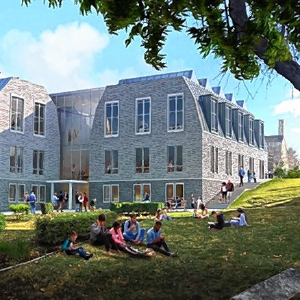 Amherst council hears call to scale back Jones work
Amherst council hears call to scale back Jones work
The most significant payment so far has been the $370,000 committed by Amherst developer Barry Roberts for his East Street Commons senior housing project. Under the bylaw for those developments for individuals 55 and older, Roberts was required to have 15%, or five of the 30 homes, be affordable and become part of the town’s subsidized housing inventory. Instead of doing that, Roberts has been making payments to Hadley as each of the 30 homes are sold.
A formula shows the Colony Estates project might have to pay $130,000. But attorney Alan Seewald, representing developer Peter Gelinas in December, said that is too high, especially after four lots couldn’t be developed due to a finding from the state’s Natural Heritage & Endangered Species Program.
“This subdivision just cannot support that kind of payment, bottom line,” Seewald said.
Seewald added that Hadley is already stringent with its inclusionary rules, noting that Amherst doesn’t require affordable units until 10 homes are part of a development.
Seewald, who also serves as the city solicitor for Northampton, told the Planning Board that it’s more important for cities and towns to not lose existing affordable housing.
“In my experience, the best way to stay above the 10% threshold is to keep the affordable housing stock you have,” Seewald said.
Planning Board member Michael Sarsynski said he is frustrated that upscale homes are regularly being built, but no contribution comes from those to the trust. “You have these McMansions going up in town, and not a nickel is coming in,” Sarsynski said.
He added that Hadley is under more pressure than rural communities to develop affordable housing, even though land is more expensive.
“The price of land to build a house in Hadley is going to be significantly greater than some other podunk community,” Sarsynski said.
Maksimoski said he would be amenable to having the inclusionary bylaw amended so that even smaller subdivision projects would still have to make some financial contribution.
The pot of money could also be used in other ways, Maksimoski said, such as leveraging it to help developers include affordable units. “We need more bang for the buck,” Maksimoski said.
Dwyer said the cash payments are still preferable to having various developers locate scattered affordable units in buildings around town. “I would want to encourage payments to the fund rather than to try to harvest one affordable unit here or one affordable unit there,” Dwyer said.
Excise taxes on sales of properties throughout the state may be the way to go, Sarsynski said, similar to how the state provides a match for the Community Preservation Act.
“That’s a lot easier to deal with, we don’t have to deal with every developer coming in here,” Sarsynski said. “By putting the onus on the developer, all we’re doing is raising the cost of housing.”
With respect to the Hadley Housing Production Plan, Maksimoski, who was on the committee that prepared it, told the Select Board on Wednesday that the 40-page report has information, recommendations and suggested actions on how to move forward to maintain and increase affordable housing. It also sheds some light on the challenges.
The median household income in Hadley is just under $87,000, compared to $73,500 in the county, while the state median household income is $84,380. There is also 2,695 acres in the Agricultural Preservation Restriction program and 5,979 acres of active farmland, limiting where projects could go.
“It’s going to take some serious looking at what can be done reasonably, especially with the price of housing right now,” Maksimoski said.
Scott Merzbach can be reached at smerzbach@gazettenet.com.
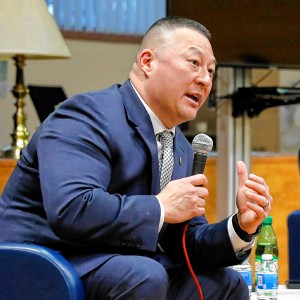 Amherst council confirms Gabriel Ting as police chief
Amherst council confirms Gabriel Ting as police chief
